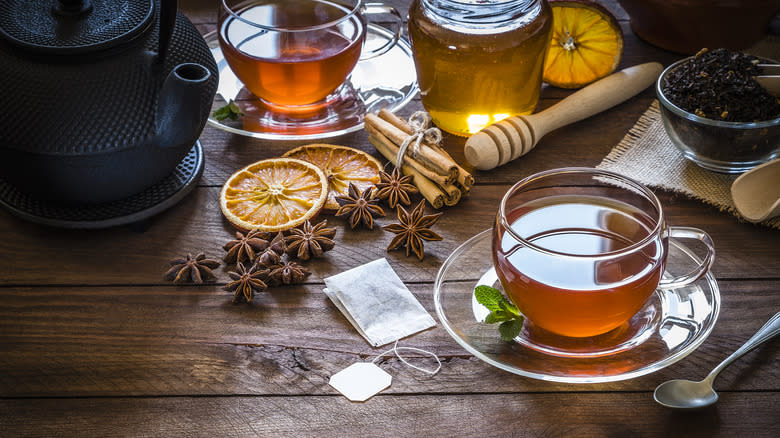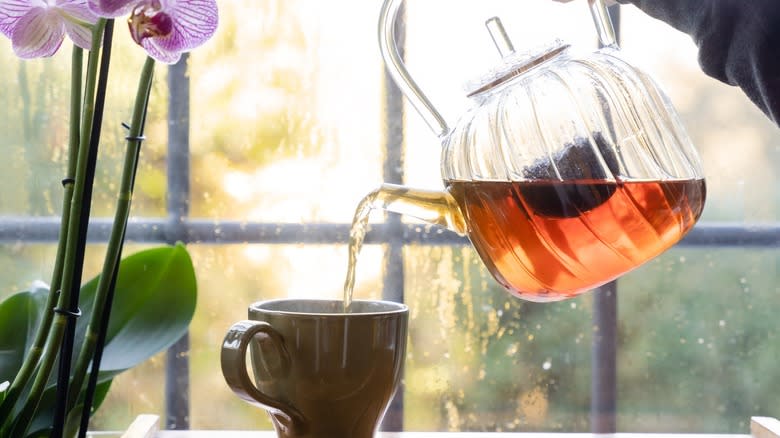The Scientific Advice On How Long You Should Steep Tea

Brewing the elusive "perfect cup of tea" can feel like juggling a merry-go-round of variables. Tea bags or loose leaf? Glass teapot or ceramic? Whether you're making a steaming mug of black tea, a pitcher of homemade iced tea, a punchy herbal tea with fresh ginger pieces, or steeping high-quality tea tips, every brew requires a unique steeping time and temperature to extract optimal flavor from those delicate ingredients. Still, there is one universal rule that will help tea lovers get the most out of their cups.
According to scientists at the University of Northumbria's School of Life Sciences (via The Sydney Morning Herald), the secret to a killer cuppa tea is to let it stand for two minutes after steeping. Then, remove the tea leaves and let it sit for an additional six minutes before drinking it. For a thirsty tea fan, the little extra patience can feel excruciating. Still, there's a reason for the restraint -- and if you've ever scalded your eager tongue on a too-hot brew before, then you'll probably be familiar with the concept, here.
Allowing the tea to rest and cool to 140 degrees Fahrenheit (or 60 degrees Celsius) creates the most ideal temperature conditions for those tea leaves to release their flavors throughout the water. Believe it or not, those precious leaves can get scalded, too. Admittedly, this peak-quality time is a narrow window. After 17 minutes and 30 seconds, or once the temps drop below 113 degrees Fahrenheit (whichever comes first), your tea will no longer be in its prime condition, say the scientists.
Read more: 15 Boba Flavors, Ranked Worst To Best
It All Boils (Pun Intended) Down To Science

Per the University of Northumbria's School of Life Sciences guidelines, to steep tea for the ages, pour boiling water over a tea bag, steep the tea for just two minutes, remove the tea leaves, then allow the cup to rest for six minutes before sipping. It might sound a little technical, but when you pour hot water over tea leaves, a chemical process is at work.
As Mental Floss explained, "When the leaves are submerged in hot water, these compounds leach into the liquid through a process called osmotic diffusion ... [and] different compounds enter the water at different rates based on their molecular weight." The first of these compounds to break down are the lighter, volatile compounds geraniol and phenylacetaldehyde, which create a tea's idiosyncratic aroma, and linalool and linalool oxide, which affect its sweetness.
Tea giant Bigelow says that different types of tea require different temperatures: just below boiling is ideal for herbal and green teas, while black teas fare better at a full boil. More specifically, the best range is 200 to 212 degrees Fahrenheit for black teas, 150 to 180 degrees for green teas, 180 to 200 degrees for oolong teas, 212 degrees for herbal teas, and 160 degrees for white teas. It depends on preference and desired strength, but as a general rule, herbal teas should steep for four minutes, black teas for two to four minutes, and green teas for three minutes. And 1 teaspoon of tea leaves per 6 to 8 ounces of water is typically a good ratio.
Read the original article on Tasting Table.

